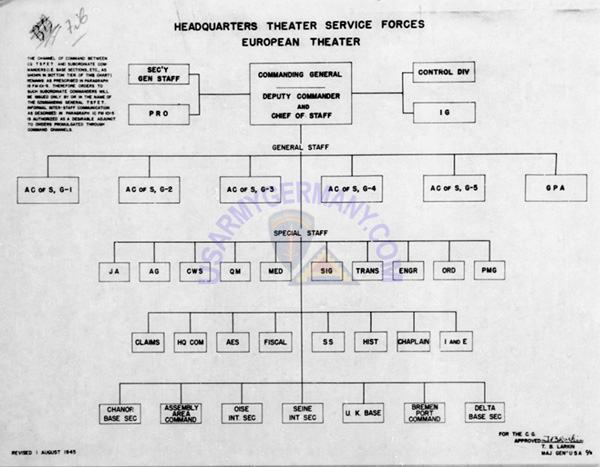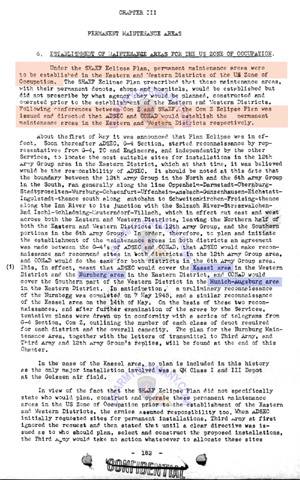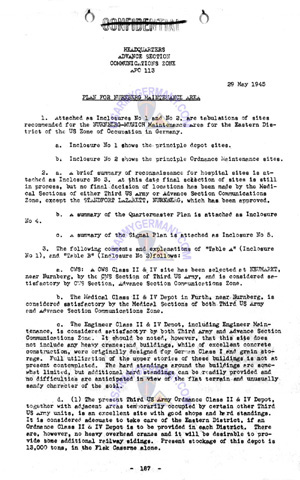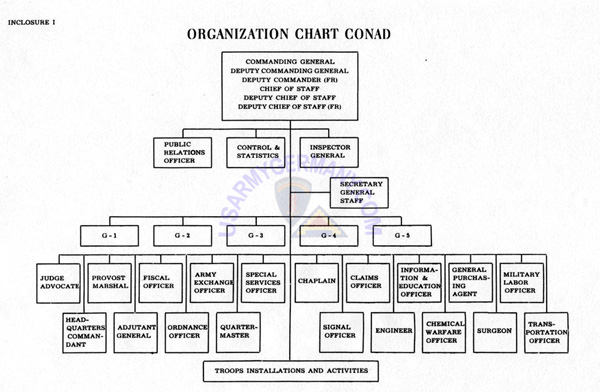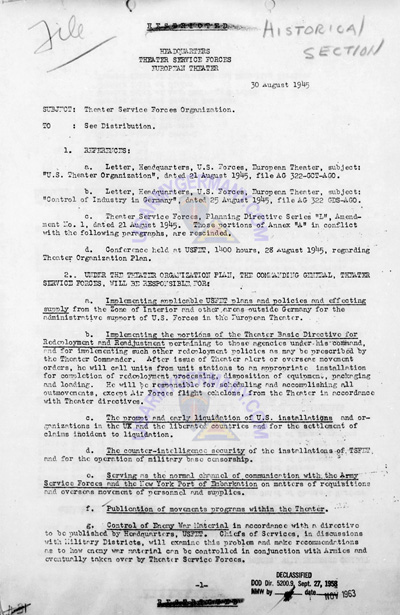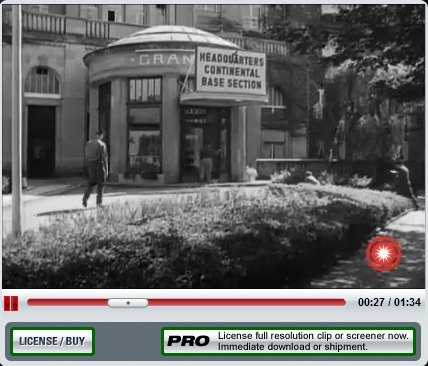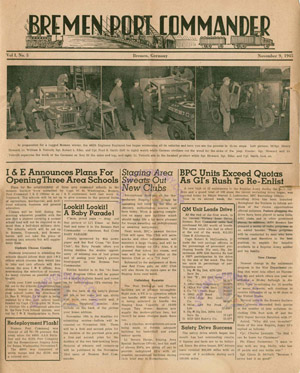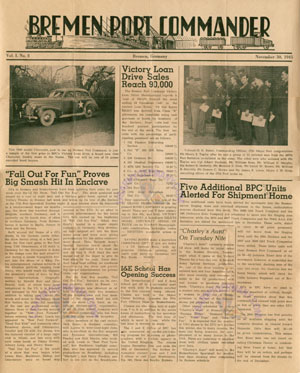| If you do NOT see the Table of Contents frame to the left of this page, then Click here to open 'USArmyGermany' frameset |
||||||||||||||||||||||||||||||||||||||||||||||||||||||||||||||||||||||||||||||||||||||||||||||||||||||||||||||||||||||||||||||||||||||||||||||||||||||||||||||||||||||||||||||||||||||||||||||||||||||||||||||||||||||||||||||||||||||||||||||||||||||
Continental Base Section |
||||||||||||||||||||||||||||||||||||||||||||||||||||||||||||||||||||||||||||||||||||||||||||||||||||||||||||||||||||||||||||||||||||||||||||||||||||||||||||||||||||||||||||||||||||||||||||||||||||||||||||||||||||||||||||||||||||||||||||||||||||||
|
||||||||||||||||||||||||||||||||||||||||||||||||||||||||||||||||||||||||||||||||||||||||||||||||||||||||||||||||||||||||||||||||||||||||||||||||||||||||||||||||||||||||||||||||||||||||||||||||||||||||||||||||||||||||||||||||||||||||||||||||||||||
| Advance Sections, Communications Zone | ||||||||||||||||||||||||||||||||||||||||||||||||||||||||||||||||||||||||||||||||||||||||||||||||||||||||||||||||||||||||||||||||||||||||||||||||||||||||||||||||||||||||||||||||||||||||||||||||||||||||||||||||||||||||||||||||||||||||||||||||||||||
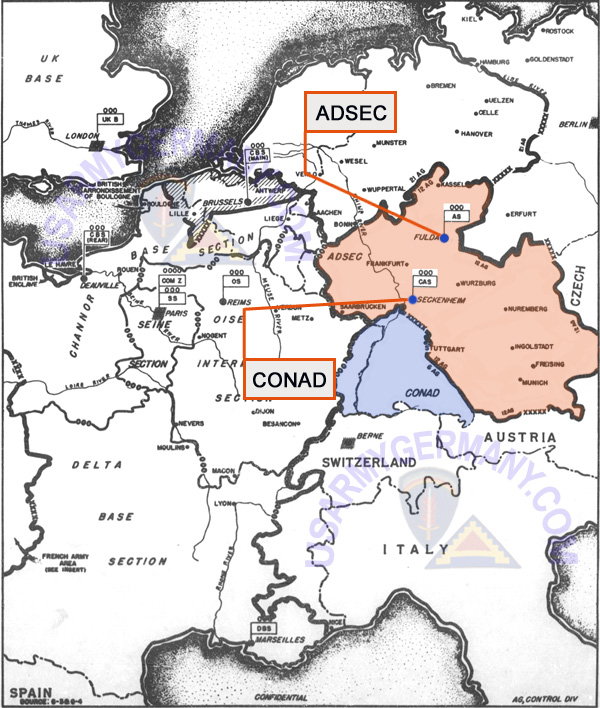 ADSEC and CONAD boundaries, July 1945 (Walter Elkins) |
||||||||||||||||||||||||||||||||||||||||||||||||||||||||||||||||||||||||||||||||||||||||||||||||||||||||||||||||||||||||||||||||||||||||||||||||||||||||||||||||||||||||||||||||||||||||||||||||||||||||||||||||||||||||||||||||||||||||||||||||||||||
| (Source: Supply: Procurement, Storage, and Issue, OCCUPATION FORCES SERIES, 1947; CONAD History, 1945) | ||||||||||||||||||||||||||||||||||||||||||||||||||||||||||||||||||||||||||||||||||||||||||||||||||||||||||||||||||||||||||||||||||||||||||||||||||||||||||||||||||||||||||||||||||||||||||||||||||||||||||||||||||||||||||||||||||||||||||||||||||||||
| When Hostilities ended in early May 1945, the field organization of Communications Zone (COMZONE) consisted of two advance sections, one intermediate section, three base sections, and the Seine Section. The sections, major commands of the Communications Zone, had almost complete responsibility for supply and administration on their respective areas. The advance sections supported, in general, each of the two army groups (6th & 12th Army Group); the intermediate section was deployed in support of both advance sections; the base sections were organized to include the major port areas. In general, the flow of supplies came from three principal directions -- north from the Marseille area (Delta Base Section), west from Normandy Base Section and south from Antwerp and the other ports of Channel Base Section. |
||||||||||||||||||||||||||||||||||||||||||||||||||||||||||||||||||||||||||||||||||||||||||||||||||||||||||||||||||||||||||||||||||||||||||||||||||||||||||||||||||||||||||||||||||||||||||||||||||||||||||||||||||||||||||||||||||||||||||||||||||||||
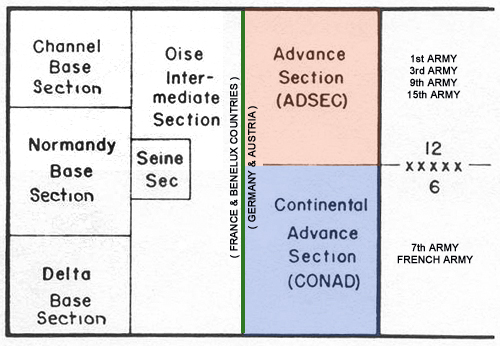 Schematic representation of Communications Zone on VE-Day |
||||||||||||||||||||||||||||||||||||||||||||||||||||||||||||||||||||||||||||||||||||||||||||||||||||||||||||||||||||||||||||||||||||||||||||||||||||||||||||||||||||||||||||||||||||||||||||||||||||||||||||||||||||||||||||||||||||||||||||||||||||||
There were functional differences between the sections:
SOP #7 Standing Operating Procedure #7, "Depot Supply System and Requisitioning Procedures," was developed during the war to provide for an even supply distribution in depth, precribing four kinds of depots -- issue, filler, base, and key.
According to the standard procedure, the issue depots were supposed to pass supplies on to the army supply points through regulating stations which would control the flow according to needs and to available transportion. One regulating station was designed to act with each army. (Webmaster note: during the war, the 24th Reg Station, ADSEC, supported Third Army. In CONAD, no regulating station provided direct support to 7th Army. Regulating stations were Transportation Corps units.) New Distribution System in Germany During the transition period immediately following VE-Day, supply of the armies in Germany continued to be carried on through the Advance Section and Continental Advance Section forward dumps and from scattered army dumps and supply points. Supply support to Bremen and Berlin came, initially, from Advance Section through Ninth Army. The two advance sections assumed the responsibility for setting up the permanent supply installations in Germany that would then be turned over to the military districts when they were established. Existing installations in the US Zone were to be utilized to the maximum extent possible. Only a minimum of construction was to be untertaken. |
||||||||||||||||||||||||||||||||||||||||||||||||||||||||||||||||||||||||||||||||||||||||||||||||||||||||||||||||||||||||||||||||||||||||||||||||||||||||||||||||||||||||||||||||||||||||||||||||||||||||||||||||||||||||||||||||||||||||||||||||||||||
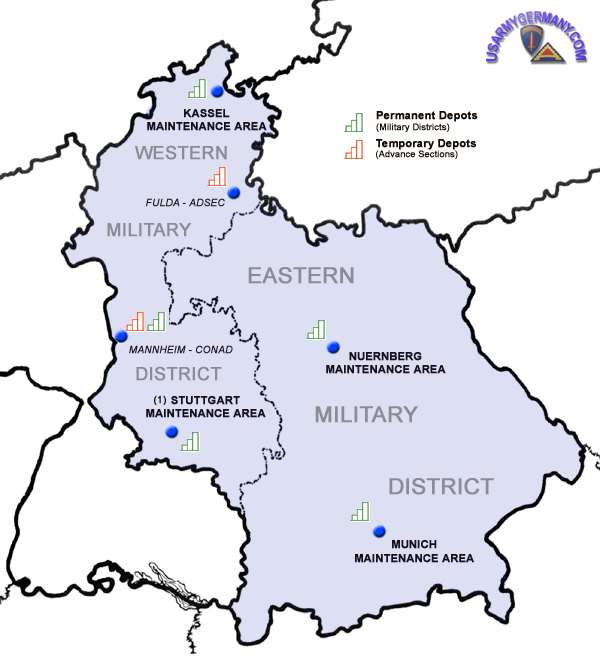 Temporary and permanent depot complexes in the US Zone of Occupation, 1945 |
||||||||||||||||||||||||||||||||||||||||||||||||||||||||||||||||||||||||||||||||||||||||||||||||||||||||||||||||||||||||||||||||||||||||||||||||||||||||||||||||||||||||||||||||||||||||||||||||||||||||||||||||||||||||||||||||||||||||||||||||||||||
| During the ECLIPSE period, the advance sections assisted in the set up of permanent depot complexes for use by the occupation armies in the US Zone . (1) Not mentioned in the above document, "Permanent Maintenance Areas", is the maintenance area that was set up by the Continental Advance Section and Seventh Army in and around Stuttgart (Source: Page 298, CONAD History). (I am trying to find details on all of the installations that were set up in the maintenance areas during the transition phase and later put into operation first by the occupation armies and then transferred to TSEFT. Will add to this report whatever I can find in the next months.) On the other hand, the Report of Operations for Seventh Army/Western Military District (8 May - 30 Sept 1945) identifies the Kassel and Mannheim areas as the sites for the permanent depots with Seventh Army taking over responsibility for both depot complexes in the late June/early July time frame. No mention is made of a maintenance area in and around Stuttgart at this time. I will do further research to determine if we had three maintenance areas (Kassel, Mannheim and Stuttgart) or only two maintenance areas (Kassel and Mannheim) in the Western Military District. (Another theory could be that there were permanent depots, etc. in the Stuttgart area that were assigned to the Mannheim Maintenance Area. An example of depots being located quite a distance away from the center of a maintenance area is Giessen, where permanent depots were set up that were part of the Kassel Maintenance Area.) ADDINTIONAL INFORMATION In the minutes of General Lee's Command and Staff Conference on 15 June 1945, the representative of CONAD (Col Scheer for Gen Wilson) made the following comments: CONAD is assisting 7th Army in planning and initiating development of permanent depots in the Stuttgart (Mannheim) and Munich areas. Two Class I and two Class III depots and one Class II & IV depot for each service will be established in the Western District. Class V depots will be established as required. So, I now believe there were two "maintenance areas" in the Western Military Distict - Kassel and Stuttgart. The permanent depots in the Mannheim-Weinheim area were part of the Stuttgart Maintenance Area. The above map will be adjusted accordingly. |
||||||||||||||||||||||||||||||||||||||||||||||||||||||||||||||||||||||||||||||||||||||||||||||||||||||||||||||||||||||||||||||||||||||||||||||||||||||||||||||||||||||||||||||||||||||||||||||||||||||||||||||||||||||||||||||||||||||||||||||||||||||
| Continental Advance Section (CONAD) | ||||||||||||||||||||||||||||||||||||||||||||||||||||||||||||||||||||||||||||||||||||||||||||||||||||||||||||||||||||||||||||||||||||||||||||||||||||||||||||||||||||||||||||||||||||||||||||||||||||||||||||||||||||||||||||||||||||||||||||||||||||||
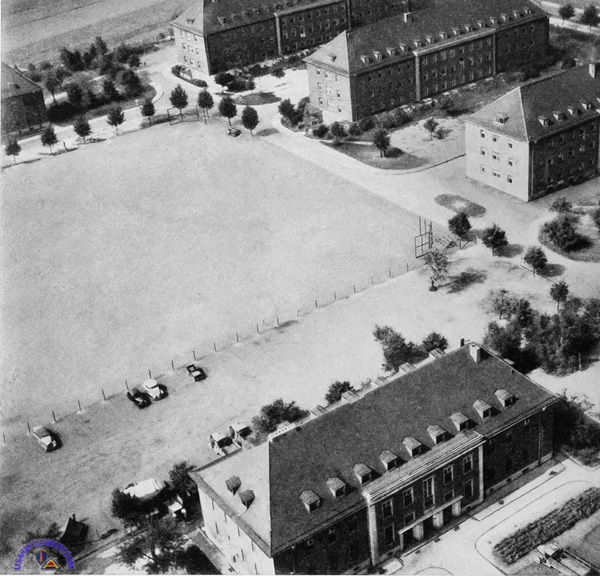 Loretto Kaserne, Seckenheim - CONAD Headquarters, May 1945 (CONAD History) |
||||||||||||||||||||||||||||||||||||||||||||||||||||||||||||||||||||||||||||||||||||||||||||||||||||||||||||||||||||||||||||||||||||||||||||||||||||||||||||||||||||||||||||||||||||||||||||||||||||||||||||||||||||||||||||||||||||||||||||||||||||||
| 1945 | ||||||||||||||||||||||||||||||||||||||||||||||||||||||||||||||||||||||||||||||||||||||||||||||||||||||||||||||||||||||||||||||||||||||||||||||||||||||||||||||||||||||||||||||||||||||||||||||||||||||||||||||||||||||||||||||||||||||||||||||||||||||
| (Source: CONAD History and CONAD Compendium, CONAD Historian, 1945) | ||||||||||||||||||||||||||||||||||||||||||||||||||||||||||||||||||||||||||||||||||||||||||||||||||||||||||||||||||||||||||||||||||||||||||||||||||||||||||||||||||||||||||||||||||||||||||||||||||||||||||||||||||||||||||||||||||||||||||||||||||||||
| The Continental Advance Section (CONAD), Communications Zone, ETO was initially organized as Coastal Base Section (CBS) at Naples, Italy on 6 July 1944. .. In September 1944, with the rapid advances made by 6th Army Group towards the German border, it became desireable to split the .... base .... and create another supply group to operate contiguous to the combat area, and to leave a regular base group along the coast to operate the ports and the major part of the adjacent territory. The new "advance section" - to be named the Continental Advance Section - would follow the Armies (7th US Army and 1st French Army). The "base group" - to be termed the Delta Base Section - would assumed most of the responsibilities previously held by the CBS - to ensure the expeditious flow of supplies coming from the Zone of Interior (= US) and England by operating ports, supply and maintenance centers along the coast. The official activation of Continental Advance Section (short title: CONAD - but sometimes also referred to as CAS) was on 1 October 1944 at Dijon, France. The CONAD mission, as stated in Circular No. 113, Headquarters, Communications Zone, publ. 6 October 1944, was as follows: a. Close support of the Seventh (U.S.) Army, First (French) Army and other forces under the command of Sixth Army Group; such other troops located forward of the rear boundary of the Advance Section, as may be assigned for supply. b. Maintenance of prescribed levels of supply and the establishment of mobile advance depots adequate for this purpose. c. Local procurement of supplies and the necessary coordination with civilian agencies. d. The establishment of 5th echelon maintenance facilities for the full support of combat forces, evacuation of unserviceable material and salvage from combat zone installations and movement to the Delta Base Section of that material which cannot be repaired in the theater. e. Evacuation of casualties from the combat zone installations, and the establishment of hospital installations necessary to receive them. f. The delivery of supplies as they are called forward by the major combat commands supported by the Advance Section; the coordination of, and planning for, all means of transportation between the Advance Section and the combat zone, and the operation of such units as may be assigned. Serving as the direct support logistical reserve for the Army, the advance section was designed to be mobile and capable of rapid movement to allow it to remain in constant contact with the Army. To meet this requirement the Continental Advance Section carried only a limited supply in its regular depots (stock levels were set at 15 days of supply for all classes). Charged with the direct supply of the armies, CONAD over the next months moved forward towards Germany - taking over supply installations of the armies in this forward movement, while abandoning its own, and immediately commencing a build-up of the new supply installations created by the armies as they continued their advance. |
||||||||||||||||||||||||||||||||||||||||||||||||||||||||||||||||||||||||||||||||||||||||||||||||||||||||||||||||||||||||||||||||||||||||||||||||||||||||||||||||||||||||||||||||||||||||||||||||||||||||||||||||||||||||||||||||||||||||||||||||||||||
| (more to follow) | ||||||||||||||||||||||||||||||||||||||||||||||||||||||||||||||||||||||||||||||||||||||||||||||||||||||||||||||||||||||||||||||||||||||||||||||||||||||||||||||||||||||||||||||||||||||||||||||||||||||||||||||||||||||||||||||||||||||||||||||||||||||
| Theater Service Forces, European Theater | ||||||||||||||||||||||||||||||||||||||||||||||||||||||||||||||||||||||||||||||||||||||||||||||||||||||||||||||||||||||||||||||||||||||||||||||||||||||||||||||||||||||||||||||||||||||||||||||||||||||||||||||||||||||||||||||||||||||||||||||||||||||
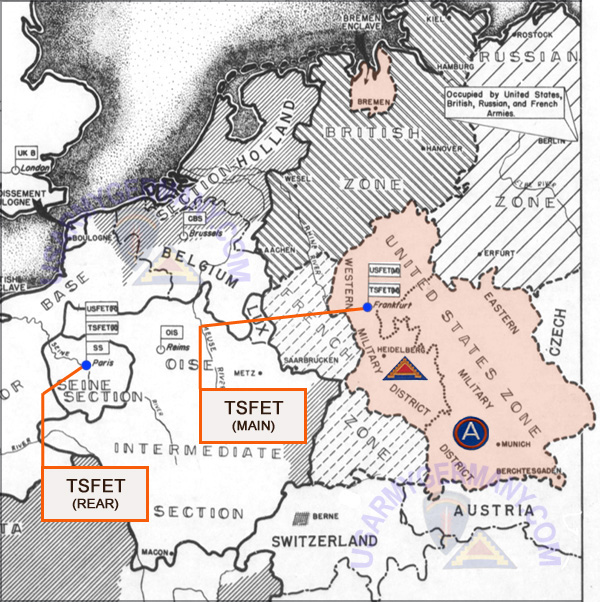 Theater Service Forces, European Theater - December 1945 (Walter Elkins) |
||||||||||||||||||||||||||||||||||||||||||||||||||||||||||||||||||||||||||||||||||||||||||||||||||||||||||||||||||||||||||||||||||||||||||||||||||||||||||||||||||||||||||||||||||||||||||||||||||||||||||||||||||||||||||||||||||||||||||||||||||||||
| 1945 | ||||||||||||||||||||||||||||||||||||||||||||||||||||||||||||||||||||||||||||||||||||||||||||||||||||||||||||||||||||||||||||||||||||||||||||||||||||||||||||||||||||||||||||||||||||||||||||||||||||||||||||||||||||||||||||||||||||||||||||||||||||||
| (Source: ARMY & NAVY Journal, Aug 11, 1945) | ||||||||||||||||||||||||||||||||||||||||||||||||||||||||||||||||||||||||||||||||||||||||||||||||||||||||||||||||||||||||||||||||||||||||||||||||||||||||||||||||||||||||||||||||||||||||||||||||||||||||||||||||||||||||||||||||||||||||||||||||||||||
HQ, Communications Zone was redes as HQ, Theater Service Forces, European Theater (TSFET) on Aug 1, 1945. Gen Lee, wartime commander of the Communications Zone, continues as Commanding General of the new set-up which continues to be an integral part of HQ USFET.. HQ TSFET will have headquarters at both Frankfurt and Paris. Under the new org, it has been proposed that staff chiefs will in general establish their main headquarters in Frankfurt. However, all sections will maintain representation in Paris. In time, as redeployment is accomplished and as operations can be closed out in liberated countries, it is intended to eliminate completely the Paris Headquarters. Meanwhile, the Paris office will, in general, retain responsibility in respect to redeployment and other operations in liberated countries and serve as the normal channel of communication to the Zone of the Interior, ports of embarkation and the Army Service Forces. The Frankfurt office will be concerned chiefly with the administration and supply support of all U.S. forces remaining in the Theater. In addition, TSFET will be responsible for the coordination of the early liquidation of U.S. installations in the United Kingdom and the liberated countries. It will also have the responsibility of establishing and stocking U.S. installations for occupation in Germany and for settlement of claims during the process of liquidation. Operating directly under TSFET will be the Chiefs of Administration and Supply Services, USFET and several service commands. Chiefs of Admin and Supply Services, USFET: Service Commands: |
||||||||||||||||||||||||||||||||||||||||||||||||||||||||||||||||||||||||||||||||||||||||||||||||||||||||||||||||||||||||||||||||||||||||||||||||||||||||||||||||||||||||||||||||||||||||||||||||||||||||||||||||||||||||||||||||||||||||||||||||||||||
| (Source: The American Military Occupation of Germany, 1945 - 1953 ) | ||||||||||||||||||||||||||||||||||||||||||||||||||||||||||||||||||||||||||||||||||||||||||||||||||||||||||||||||||||||||||||||||||||||||||||||||||||||||||||||||||||||||||||||||||||||||||||||||||||||||||||||||||||||||||||||||||||||||||||||||||||||
Soon after the end of combat, the Communications Zone lost its wartime title and on Aug 1, 1945, was redes Theater Service Forces, European Theater, a counterpart of the Army Service Forces in the United States. After Dec 31, 1945, the most important functions of TSFET, except redeployment, were centered at Frankfurt. As supply needs were reduced, TSFET became superfluous; it was discontinued on Feb 28, 1946. A number of supply and other functions of TSFET were inherited by Continental Base Section and Western Base Section (see those chapters for more). |
||||||||||||||||||||||||||||||||||||||||||||||||||||||||||||||||||||||||||||||||||||||||||||||||||||||||||||||||||||||||||||||||||||||||||||||||||||||||||||||||||||||||||||||||||||||||||||||||||||||||||||||||||||||||||||||||||||||||||||||||||||||
| Communications Zone Planning for Supply of the Occupation Forces | ||||||||||||||||||||||||||||||||||||||||||||||||||||||||||||||||||||||||||||||||||||||||||||||||||||||||||||||||||||||||||||||||||||||||||||||||||||||||||||||||||||||||||||||||||||||||||||||||||||||||||||||||||||||||||||||||||||||||||||||||||||||
(Source: Supply - Procurement, Storage, and Issue, OCCUPATON FORCES IN EUROPE) |
||||||||||||||||||||||||||||||||||||||||||||||||||||||||||||||||||||||||||||||||||||||||||||||||||||||||||||||||||||||||||||||||||||||||||||||||||||||||||||||||||||||||||||||||||||||||||||||||||||||||||||||||||||||||||||||||||||||||||||||||||||||
Short-term Plans At the end of the ECLIPSE period, ComZ functions in Germany, were to cease, except for operating the Bremen Enclave, and keeping the army installations filled. The new Theater Hqs (USFET) was to assume supply responsibility from there on, as directed by the plan of Supreme Hqs. SHAEF ECLIPSE plans specified that the permanent supply installations in Germany would be operated by the military districts. ComZ assumed the responsibility of setting up and operating the permanent installations prior to the establishment of the military districts. Prior to V-E Day, ADSEC and CONAD made reconnaissance into the army areas to determine sites for the permanent installations. Redeployment and the necessity for continued support for operations in Germany required that ADSEC and CONAD continue to operate essential depots, maintenance establishments, and other installations, and even establish new installations. However, all services were directed to plan for a gradual reduction and consolidation of these installations into permanent general areas (to be selected as a result of further reconnaissance). Long-term Plans Prior to the opening of Bremen, supply support for all U.S. forces in Germany and Austria would have to be furnished from existing installations in the liberated countries. Plans called for the following number of troops to be supported through the liberated countries:
(The goal was to supply all occupation troops through the German ports - Bremen and Bremerhaven - after V-E Day plus 60.) Depot supply levels were to be established as follows:
By V-E Day plus 120, it was expected that the reserve supplies for the ultimate army of occupation would be established in Germany. |
||||||||||||||||||||||||||||||||||||||||||||||||||||||||||||||||||||||||||||||||||||||||||||||||||||||||||||||||||||||||||||||||||||||||||||||||||||||||||||||||||||||||||||||||||||||||||||||||||||||||||||||||||||||||||||||||||||||||||||||||||||||
| Reorganization of Depot and Distribution System | ||||||||||||||||||||||||||||||||||||||||||||||||||||||||||||||||||||||||||||||||||||||||||||||||||||||||||||||||||||||||||||||||||||||||||||||||||||||||||||||||||||||||||||||||||||||||||||||||||||||||||||||||||||||||||||||||||||||||||||||||||||||
| Every effort was made to establish supply installations in their permanent locations as soon as possible. Initial depots in Germany were to be issue depots established by ADSEC, CONAD, Berlin District and Bremen Port Command in their respective areas.
Depots in the Zone and in Berlin District would gradually be converted to a combination of filler-issue depot while those in the Bremen Enclave would be changed into base depots. Existing installations in the U.S. Zone were to be utilized to the maximum extent possible; only a minimum of construction was to be undertaken, and as far as possible by utilization of German labor and materials. The above disadvantages made it desirable that a system of fixed installations be established as soon as possible for servicing the troops. The system was also to be limited to the US Zone, as all American forces located outside of the US zone of occupation would eventually have to be withdrawn into the Zone. Consequently the supply efforts were directed toward setting up permanent reserves in the ultimate zone while maintaining in the other areas only those quantities needed for immediate operations. During May steps were being taken to establish the permanent depot system under each military district and to liquidate Communications Zone functions in Germany. In addition to depots in the military districts designed to store 45 days supply and, ultimately, to serve as filler depots, the development of base depots was planned in the Bremen Enclave for the storage of 15 days supply. By July 2 1945, Bremen Port Command reported that this depot structure was complete. As of Oct 1, depots had been established in the Bremen Enclave for Engineer, Medical, Ordnance, and Signal Class II and IV, QM Class I, II, III, and IV, and for TC supplies. This depot and supply system for the permanent occupation forces in Germany developed during the summer in accordance with the plans. CONAD and ADSEC released depot control on June 10, but continued to support the armies until early in July, meantime gradually turning over their functions to the armies. |
||||||||||||||||||||||||||||||||||||||||||||||||||||||||||||||||||||||||||||||||||||||||||||||||||||||||||||||||||||||||||||||||||||||||||||||||||||||||||||||||||||||||||||||||||||||||||||||||||||||||||||||||||||||||||||||||||||||||||||||||||||||
| Armies assume Supply Mission in Germany | ||||||||||||||||||||||||||||||||||||||||||||||||||||||||||||||||||||||||||||||||||||||||||||||||||||||||||||||||||||||||||||||||||||||||||||||||||||||||||||||||||||||||||||||||||||||||||||||||||||||||||||||||||||||||||||||||||||||||||||||||||||||
| ECLIPSE planning had provided for the continuation of ADSEC and CONAD until the dissolution of the combined command at SHAEF. In spite of this, liquidation of these two advance sections was begun three weeks ahead of time, on June 10. Within a month the armies had taken over their functions.
Initially logistical support of Austria was assigned to Third Army. That of Bremen and Berlin was at first a Ninth Army responsibility, then with the realignment into zones of occupation, was transferred to Seventh Army. Later Bremen Port Command was to assume this responsibility. The transfer of supply activities in Germany from ComZ Hqs to army operation was a fairly difficult one involving a number of adjustments: With the service troop issue resolved, the depot structure taking shape, and the final zones of occupation being set up, CONAD and ADSEC were dissolved on July 15. With the French First Army taking charge of their zone (July 10), the reorg of Fifteenth Army (...), and the establishment of USFET (July 1), the new supply system went into effect. Outstanding issues at the time: |
||||||||||||||||||||||||||||||||||||||||||||||||||||||||||||||||||||||||||||||||||||||||||||||||||||||||||||||||||||||||||||||||||||||||||||||||||||||||||||||||||||||||||||||||||||||||||||||||||||||||||||||||||||||||||||||||||||||||||||||||||||||
| Theater Supply Plan - Period 2 | ||||||||||||||||||||||||||||||||||||||||||||||||||||||||||||||||||||||||||||||||||||||||||||||||||||||||||||||||||||||||||||||||||||||||||||||||||||||||||||||||||||||||||||||||||||||||||||||||||||||||||||||||||||||||||||||||||||||||||||||||||||||
| On Aug 12 the War Dept had forwarded a general policy plan of supply (Cable WX-48662, AGWAR to USFET MAIN) for what was designated as Period 2 - the period after the defeat of Japan to the time that the bulk of wartime forces were withdrawn to the U.S.
The plan prescribed: In effect, the Theater supply plan for Period 2 provided for the implementation by TSFET of the following: With the publication of the Revised SOP 7 on Sept 24, 1945, the depot system was now defined as containing base, key, and filler depots, and the (troop) issues being made by supply points under control of the armies for units in their respective military districts. Base depots were to be in the Bremen Enclave, while the major portion of Theater stocks was to be stored in the filler depots in Eastern and Western Military District and in Berlin District. Filler depots in the liberated countries were to continue as long as necessary to furnish supplies for troops awaiting redeployment and to dispose of surplus property either in Germany or by outshipment of sale. |
||||||||||||||||||||||||||||||||||||||||||||||||||||||||||||||||||||||||||||||||||||||||||||||||||||||||||||||||||||||||||||||||||||||||||||||||||||||||||||||||||||||||||||||||||||||||||||||||||||||||||||||||||||||||||||||||||||||||||||||||||||||
| Basic Supply Plan - End of 1945 | ||||||||||||||||||||||||||||||||||||||||||||||||||||||||||||||||||||||||||||||||||||||||||||||||||||||||||||||||||||||||||||||||||||||||||||||||||||||||||||||||||||||||||||||||||||||||||||||||||||||||||||||||||||||||||||||||||||||||||||||||||||||
During the period Oct 1 to Dec 31 1945, the logistical organization in the Theater was based on the operation under one command, Theater Service Forces, European Theater, of all installations serving the Theater as a whole. (These installations also served all units and organizations in their respective areas, in a retail capacity.) The area commands (Third Army Area and Seventh Army Area) operated supply points for those units and organizations not served Berlin District and USFA operated depots in their respective areas since they were separated from the US Zone in Germany. |
||||||||||||||||||||||||||||||||||||||||||||||||||||||||||||||||||||||||||||||||||||||||||||||||||||||||||||||||||||||||||||||||||||||||||||||||||||||||||||||||||||||||||||||||||||||||||||||||||||||||||||||||||||||||||||||||||||||||||||||||||||||
| Continental Base Section (CBS) | ||||||||||||||||||||||||||||||||||||||||||||||||||||||||||||||||||||||||||||||||||||||||||||||||||||||||||||||||||||||||||||||||||||||||||||||||||||||||||||||||||||||||||||||||||||||||||||||||||||||||||||||||||||||||||||||||||||||||||||||||||||||
| (*) Entrance to 'Headquarters of Continental Base Section' in Bad Nauheim, August 1946. People enter into the building. Two officers talk beside a street. Bathhouse and natural fountains. Bathhouse yard through an arch. (Duration: 1 min 34 sec) | ||||||||||||||||||||||||||||||||||||||||||||||||||||||||||||||||||||||||||||||||||||||||||||||||||||||||||||||||||||||||||||||||||||||||||||||||||||||||||||||||||||||||||||||||||||||||||||||||||||||||||||||||||||||||||||||||||||||||||||||||||||||
| 1946 | ||||||||||||||||||||||||||||||||||||||||||||||||||||||||||||||||||||||||||||||||||||||||||||||||||||||||||||||||||||||||||||||||||||||||||||||||||||||||||||||||||||||||||||||||||||||||||||||||||||||||||||||||||||||||||||||||||||||||||||||||||||||
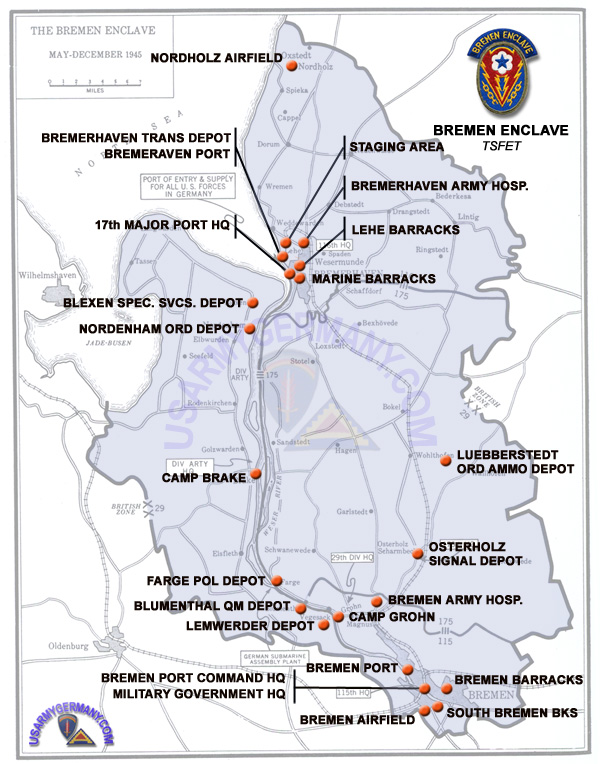 US military installations in the Bremen Enclave, late 1945 |
||||||||||||||||||||||||||||||||||||||||||||||||||||||||||||||||||||||||||||||||||||||||||||||||||||||||||||||||||||||||||||||||||||||||||||||||||||||||||||||||||||||||||||||||||||||||||||||||||||||||||||||||||||||||||||||||||||||||||||||||||||||
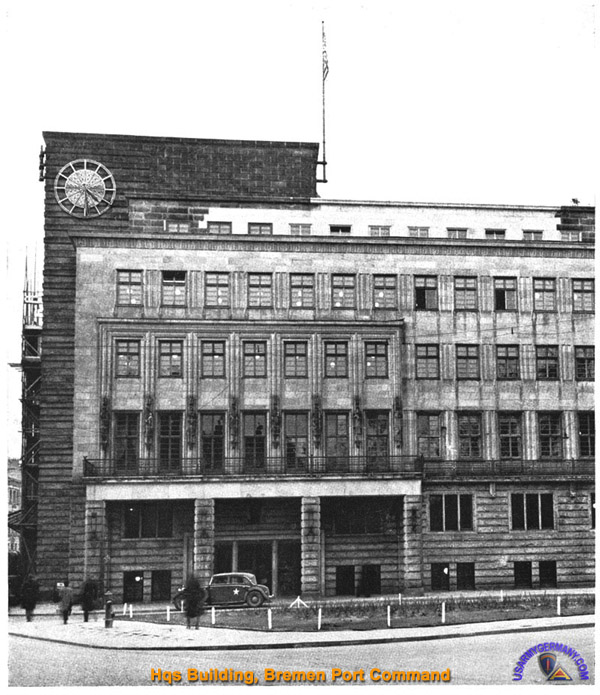 |
||||||||||||||||||||||||||||||||||||||||||||||||||||||||||||||||||||||||||||||||||||||||||||||||||||||||||||||||||||||||||||||||||||||||||||||||||||||||||||||||||||||||||||||||||||||||||||||||||||||||||||||||||||||||||||||||||||||||||||||||||||||
| Bremen Port Command | ||||||||||||||||||||||||||||||||||||||||||||||||||||||||||||||||||||||||||||||||||||||||||||||||||||||||||||||||||||||||||||||||||||||||||||||||||||||||||||||||||||||||||||||||||||||||||||||||||||||||||||||||||||||||||||||||||||||||||||||||||||||
| (Source: Hqs Communications Zone ETO Generol Order #50, dtd 11 April 1945) | ||||||||||||||||||||||||||||||||||||||||||||||||||||||||||||||||||||||||||||||||||||||||||||||||||||||||||||||||||||||||||||||||||||||||||||||||||||||||||||||||||||||||||||||||||||||||||||||||||||||||||||||||||||||||||||||||||||||||||||||||||||||
| I - ESTABLISHMENT OF BREMEN PORT COMMAND. Effective this date, Bremen Port Command (Enclave Port Area) is established as a separate element of this command. (AG 322 OpDCG) II - ANNOUNCEMENT OF ASSIGNMENT. Major General HARRY B. VAUGHAN, JR, USA, is announced as Commander of the Bremen Port Command. (AG 322.01 OpDCG) III - MISSION. 1. The Commander of the Bremen Port Command will be responsible for carrying out all functions assigned to the Bremen Port Command in Planning Directive Series K, No 1 (Plan "C" Revised), 28 March 1945, as amended by additional instructions that may be issued by this headquarters. 2. The Commander of the Bremen Port Command will develop detailed plans for the organization and operation of the Bremen Port Command, and will obtain from the general and special staff sections of this headquarters such assistance in preparation of the detailed plans as required. 3. In the preparation of plans and in the accomplishment of his responsibilities, the Commander of the Bremen Port Command will coordinate his activities with all ground force, air force and Navy agencies concerned. BY COMMAND OF LIEUTENANT GENERAL LEE T.B. LARKIN Major General, USA, Chief of Staff |
||||||||||||||||||||||||||||||||||||||||||||||||||||||||||||||||||||||||||||||||||||||||||||||||||||||||||||||||||||||||||||||||||||||||||||||||||||||||||||||||||||||||||||||||||||||||||||||||||||||||||||||||||||||||||||||||||||||||||||||||||||||
| Bremen Port Command/Bremen Enclave - Chronology of the first 2 years | ||||||||||||||||||||||||||||||||||||||||||||||||||||||||||||||||||||||||||||||||||||||||||||||||||||||||||||||||||||||||||||||||||||||||||||||||||||||||||||||||||||||||||||||||||||||||||||||||||||||||||||||||||||||||||||||||||||||||||||||||||||||
| 1945-1947 | ||||||||||||||||||||||||||||||||||||||||||||||||||||||||||||||||||||||||||||||||||||||||||||||||||||||||||||||||||||||||||||||||||||||||||||||||||||||||||||||||||||||||||||||||||||||||||||||||||||||||||||||||||||||||||||||||||||||||||||||||||||||
|
||||||||||||||||||||||||||||||||||||||||||||||||||||||||||||||||||||||||||||||||||||||||||||||||||||||||||||||||||||||||||||||||||||||||||||||||||||||||||||||||||||||||||||||||||||||||||||||||||||||||||||||||||||||||||||||||||||||||||||||||||||||
| 1947 | ||||||||||||||||||||||||||||||||||||||||||||||||||||||||||||||||||||||||||||||||||||||||||||||||||||||||||||||||||||||||||||||||||||||||||||||||||||||||||||||||||||||||||||||||||||||||||||||||||||||||||||||||||||||||||||||||||||||||||||||||||||||
| STATION LIST - Units in the Bremen Enclave (Sept 1947): | ||||||||||||||||||||||||||||||||||||||||||||||||||||||||||||||||||||||||||||||||||||||||||||||||||||||||||||||||||||||||||||||||||||||||||||||||||||||||||||||||||||||||||||||||||||||||||||||||||||||||||||||||||||||||||||||||||||||||||||||||||||||
|
||||||||||||||||||||||||||||||||||||||||||||||||||||||||||||||||||||||||||||||||||||||||||||||||||||||||||||||||||||||||||||||||||||||||||||||||||||||||||||||||||||||||||||||||||||||||||||||||||||||||||||||||||||||||||||||||||||||||||||||||||||||
| (1) unit scheduled to be inactivated in theater | ||||||||||||||||||||||||||||||||||||||||||||||||||||||||||||||||||||||||||||||||||||||||||||||||||||||||||||||||||||||||||||||||||||||||||||||||||||||||||||||||||||||||||||||||||||||||||||||||||||||||||||||||||||||||||||||||||||||||||||||||||||||
| Bremen Port Commander Weekly Newspaper | ||||||||||||||||||||||||||||||||||||||||||||||||||||||||||||||||||||||||||||||||||||||||||||||||||||||||||||||||||||||||||||||||||||||||||||||||||||||||||||||||||||||||||||||||||||||||||||||||||||||||||||||||||||||||||||||||||||||||||||||||||||||
| Bremen Port Commander - Some of the issues published in the Bremen Enclave | ||||||||||||||||||||||||||||||||||||||||||||||||||||||||||||||||||||||||||||||||||||||||||||||||||||||||||||||||||||||||||||||||||||||||||||||||||||||||||||||||||||||||||||||||||||||||||||||||||||||||||||||||||||||||||||||||||||||||||||||||||||||
| Related Links | ||||||||||||||||||||||||||||||||||||||||||||||||||||||||||||||||||||||||||||||||||||||||||||||||||||||||||||||||||||||||||||||||||||||||||||||||||||||||||||||||||||||||||||||||||||||||||||||||||||||||||||||||||||||||||||||||||||||||||||||||||||||

